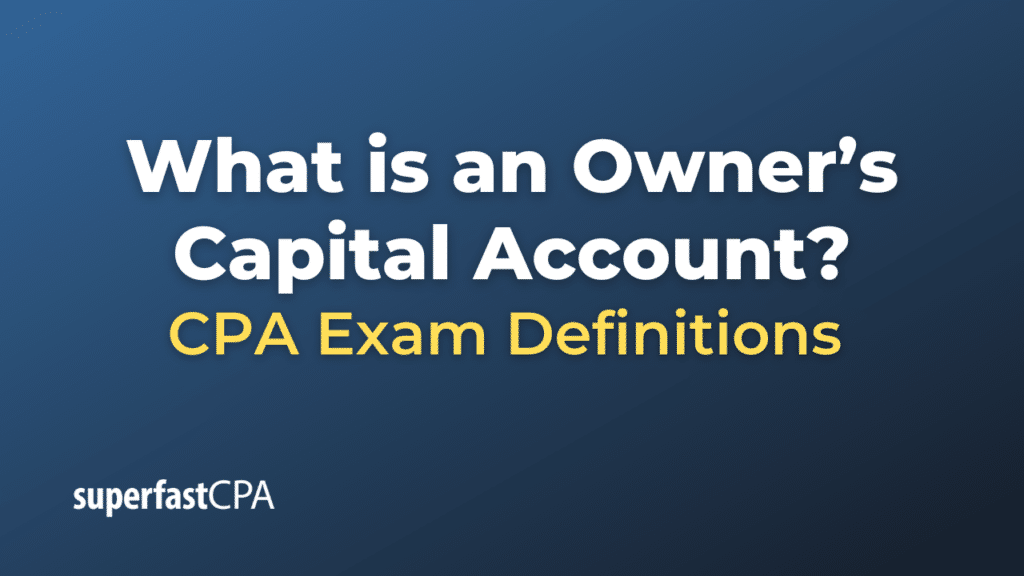Owner’s Capital Account
An owner’s capital account, also known as an owner’s equity account, is a part of the accounting records in a company that records the owner’s investment in the business. This account is used in sole proprietorships and partnerships, where the business is directly owned by individuals.
The owner’s capital account reflects the amount of the business that belongs to the owner(s) and changes based on three main types of activities:
- Investment by Owners: When owners put money into the business, either when the business is started or later on, this increases the balance of the owner’s capital account. This investment can be in the form of cash, property, or other assets.
- Withdrawals by Owners: When owners take money out of the business for personal use, these withdrawals are subtracted from the owner’s capital account. These withdrawals may also be referred to as “draws.”
- Business Profits or Losses: At the end of each accounting period, the net income or loss of the business is added to or subtracted from the owner’s capital account. If the business has a net income, this increases the owner’s equity; if the business has a net loss, this decreases the owner’s equity.
In a corporation, the concept of an owner’s capital account is replaced by share capital and retained earnings, which serve similar purposes but are structured differently due to the nature of corporations as separate legal entities with shareholders rather than direct owners.
Example of an Owner’s Capital Account
Let’s consider an example involving a sole proprietorship:
John decides to start his own photography business. To fund the initial operations of his business, he invests $10,000 from his personal savings. In this scenario, John’s capital account would initially be $10,000.
During the year, John’s business performs well and makes a net income (profits after all expenses have been accounted for) of $5,000. This net income would increase John’s capital account to $15,000 ($10,000 original investment + $5,000 net income).
At the end of the year, John decides to take out $2,000 for his personal use. This withdrawal, often referred to as an owner’s draw, would decrease his capital account to $13,000 ($15,000 – $2,000).
So, at the end of the year, John’s owner’s capital account shows a balance of $13,000. This balance represents John’s equity in the business and indicates that, if he were to pay off all of his business liabilities, he would be left with $13,000.
This example provides a basic illustration of how an owner’s capital account is managed. In practice, these accounts can be much more complex, particularly for larger businesses or those with multiple owners.














